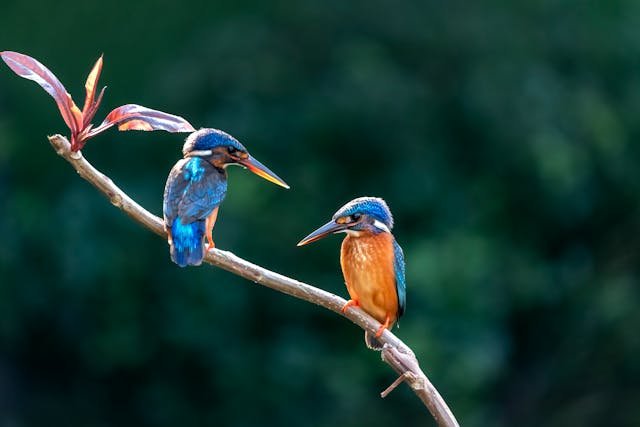Wildlife plays a crucial role in maintaining the balance of our ecosystems. From majestic tigers to tiny pollinators, every species contributes to the health of our planet. However, many wild animals are facing grave threats, including habitat loss, climate change, and poaching. Protecting them is not just an ethical responsibility but also essential for the survival of life as we know it.
This article introduces 10 Wildlife Conservation Organizations that are making a significant impact in the conservation of wild animals and their habitats. These organizations work tirelessly to address challenges like dwindling populations, human-wildlife conflicts, and the degradation of natural ecosystems.
Let’s explore how these remarkable groups are safeguarding endangered species and preserving the natural world for future generations.

What Are The Importance of Wildlife Conservation Organizations
Wildlife conservation organizations play a critical role in protecting the natural world and ensuring a sustainable future. These groups work tirelessly to combat global threats to wildlife and promote biodiversity, making them essential for the well-being of our planet.
1. Addressing Global Threats
The survival of countless species is at risk due to threats like habitat loss, poaching, climate change, and pollution. These challenges disrupt ecosystems, endanger species, and harm the balance of nature.
- Habitat Loss: Urbanization, deforestation, and agriculture reduce the natural spaces that animals depend on for survival. Conservation organizations work to protect and restore critical habitats, ensuring that conservation animals have the space they need to thrive.
- Poaching and Illegal Wildlife Trade: Many species are hunted for their fur, horns, or other body parts. The Wildlife Conservation Society and other most reputable wildlife charities combat poaching through anti-poaching initiatives, community education, and legal advocacy.
- Climate Change and Pollution: Rising temperatures and pollution threaten wildlife across the globe. Conservation groups promote sustainable practices and advocate for climate action to reduce these impacts.
2. Promoting Biodiversity
Biodiversity is vital for maintaining healthy ecosystems, which in turn support human well-being. Each species plays a unique role in balancing food chains, pollination, and nutrient cycling. Without biodiversity, ecosystems could collapse.
- Preservation Efforts: Wildlife conservation organizations help protect endangered species, preserving the richness of life on Earth. These efforts often include breeding programs, habitat restoration, and species-specific action plans.
- Global Impact: Organizations like the Wildlife Conservation Society helping out animals contribute to biodiversity by creating wildlife corridors, protecting rainforests, and supporting marine conservation.
By addressing threats and promoting biodiversity, these organizations make a profound difference in the world. Supporting them is a step toward a healthier, more balanced planet.
List of Top 10 Wildlife Conservation Organizations
Here are some of the most impactful organizations dedicated to the conservation of wildlife and protecting wildlife around the world:
1. World Wildlife Fund (WWF)
- Focus: Conservation of nature, reducing human impact, and protecting vulnerable species.
- Key Programs:
- Species conservation efforts for animals like tigers, pandas, and marine life.
- Climate change mitigation and sustainable resource use.
- Partnering with communities to create solutions for coexisting with wildlife conservation animals.
2. Wildlife Conservation Society (WCS)
- Focus: Protecting wildlife and wild places through global conservation initiatives.
- Key Programs:
- Operating zoos and aquariums to raise awareness and fund conservation.
- Fieldwork in over 60 countries to conserve ecosystems and address threats to endangered species.
- Supporting research and education to empower local conservation groups.
3. The Nature Conservancy (TNC)
- Focus: Conserving lands, waters, and tackling climate change.
- Key Programs:
- Restoring critical habitats for endangered species.
- Implementing sustainable land-use practices to preserve biodiversity.
- Creating innovative climate solutions to protect wildlife and their ecosystems.
4. International Union for Conservation of Nature (IUCN)
- Focus: Global conservation strategies and the Red List of Threatened Species.
- Key Programs:
- Monitoring species extinction risks and advocating for protective measures.
- Influencing international policies to support the conservation of wildlife.
- Collaborating with governments and the wildlife group to restore ecosystems.
5. National Audubon Society
- Focus: Bird conservation and addressing climate change impacts on avian species.
- Key Programs:
- Creating bird-friendly communities to protect migratory and native species.
- Preserving habitats essential for bird populations.
- Advocating for climate change solutions to ensure the survival of birds and their ecosystems.
6. Conservation International (CI)
- Focus: Protecting critical ecosystems that support biodiversity and human well-being.
- Key Programs:
- Implementing nature-based solutions to combat climate change and protect wildlife.
- Promoting sustainable development practices to balance conservation with human needs.
- Engaging communities worldwide to support the protection and conservation of wildlife.
7. Rainforest Alliance
- Focus: Protecting forests, biodiversity, and promoting sustainable livelihoods.
- Key Programs:
- Certification programs for sustainable agriculture and forestry practices.
- Advocating for responsible tourism that minimizes environmental impact.
- Empowering farmers and businesses to conserve forests and protect biodiversity.
8. Defenders of Wildlife
- Focus: Protecting native animals and their habitats across North America.
- Key Programs:
- Developing strategies for wildlife coexistence, such as reducing human-wildlife conflicts.
- Leading habitat restoration projects for imperiled species like wolves, bears, and sea turtles.
- Working with policymakers to strengthen wildlife conservation laws and protect ecosystems.
9. Fauna & Flora International (FFI)
- Focus: Safeguarding threatened species and their ecosystems around the globe.
- Key Programs:
- Supporting marine conservation to protect coral reefs and ocean biodiversity.
- Implementing projects that focus on climate adaptation for species vulnerable to changing environments.
- Partnering with local organizations to ensure long-term success in wildlife conservation agencies.
10. Zoological Society of London (ZSL)
- Focus: Advancing the conservation of animals and their habitats globally.
- Key Programs:
- EDGE of Existence: A program dedicated to protecting Evolutionarily Distinct and Globally Endangered species.
- Habitat protection initiatives to conserve areas critical to wildlife survival.
- Leading research and education efforts in animal conservation organizations worldwide.
These wildlife conservation agencies and animal conservation organizations are making incredible strides in protecting species and preserving the natural world. By supporting their work, we can all contribute to the protection and conservation of wildlife for future generations.
How to Support Wildlife Conservation Organizations
Supporting wildlife conservation is a vital way to protect endangered species and preserve the planet’s natural beauty for future generations. Whether it’s through donations, volunteering, or adopting eco-friendly habits, everyone can contribute to the important work of wildlife charities and environmental organizations.
1. Donations
- Financial contributions are one of the most effective ways to help wildlife conservation groups. These funds support critical initiatives like habitat restoration, anti-poaching efforts, and species recovery programs.
- Even small donations can make a big difference for wildlife animal conservation. Many wildlife charities offer options to adopt a species or sponsor a conservation project.
2. Volunteering
- Many organizations provide opportunities to volunteer directly in conservation activities such as wildlife monitoring, habitat restoration, or education programs.
- You can assist with tasks like planting trees, rehabilitating injured animals, or helping with events that promote wildlife protection. Volunteering is a hands-on way to make a meaningful impact.
3. Advocacy
- Advocate for stronger wildlife protection laws by writing letters, signing petitions, or contacting elected officials. Policies that safeguard habitats and reduce threats to wildlife are essential for lasting conservation.
- Raise awareness through social media or community events to help others understand the importance of wildlife conservation and the challenges faced by endangered species.
4. Sustainable Living
- Reduce Your Carbon Footprint: Simple actions like using energy-efficient appliances, reducing car use, and supporting renewable energy can combat climate change, which impacts wildlife habitats.
- Minimize Animal Product Consumption: Cutting back on meat and other animal products reduces deforestation and water use, benefiting the ecosystems wildlife depends on.
- Support Sustainable Products: Choose products certified as wildlife-friendly or environmentally sustainable to help reduce harm to animals and their habitats.
By donating, volunteering, advocating, and adopting sustainable living practices, you can actively support wildlife conservation groups and environmental organizations working to protect our planet’s incredible biodiversity. Every action counts in ensuring a brighter future for wildlife animal conservation.
Conclusion
Wildlife conservation organizations play a vital role in protecting endangered species, preserving habitats, and maintaining the balance of our ecosystems. The Top 10 Wildlife Conservation Organizations highlighted in this article exemplify the dedication, innovation, and collaborative efforts needed to address the global challenges facing wildlife.
From preserving rainforests and advocating for climate action to creating sustainable communities and restoring habitats, these organizations make a profound impact on wildlife protection and the conservation of wild animals.
By supporting their efforts through donations, volunteering, or adopting sustainable practices, we can all contribute to their mission and help secure a future where wildlife thrives. Together, let’s protect the planet’s incredible biodiversity and ensure that the natural world continues to inspire and sustain us for generations to come.

Anamika is a passionate writer for Eco365Store.com, specializing in topics that inspire a cleaner, greener world. With expertise in home cleaning, recycling, and eco-friendly solutions, she crafts engaging and informative articles that help readers adopt sustainable practices in their daily lives.
